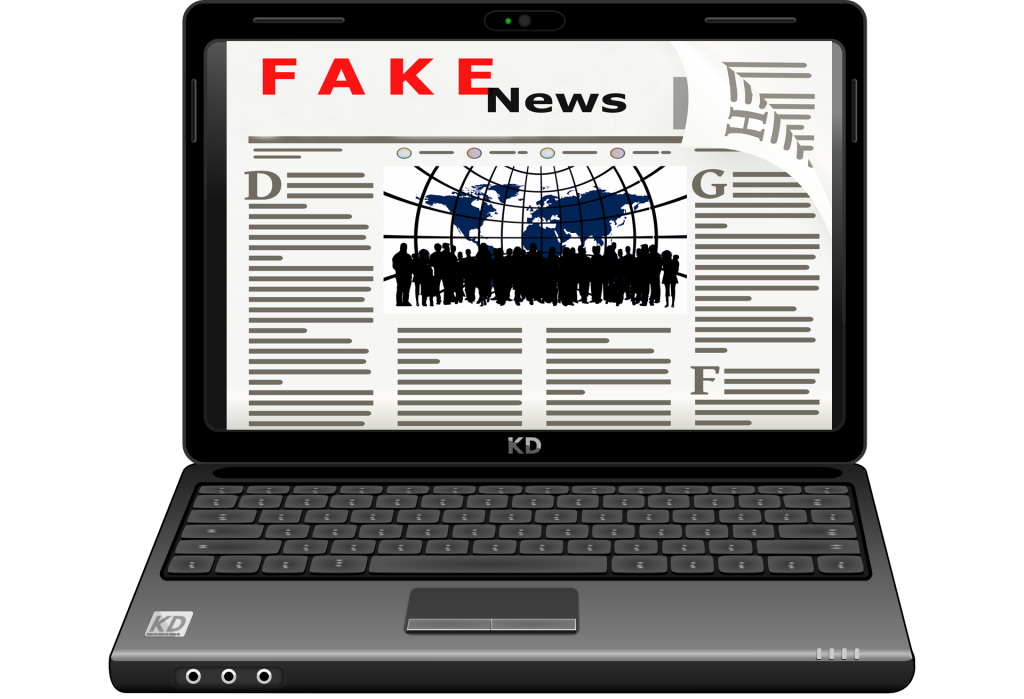I remember in elementary being taught to always have a critical eye when looking at websites or at articles and thinking about whether it was a legitimate source or not. The protocol was basic common sense-look around the site, if something seems fishy, investigate further. The issue with that method was that we usually just looked around the site and if we saw a picture or “About Us” page we automatically assumed it was legitimate. However, I am becoming increasingly aware that this will not do the trick in our digital society anymore. Fake news isn’t so obvious. While reading Developing Critical Literacies: What We Need to Know in a “Fake News” World I read that there is a new tool out there where this technology can scan people’s faces in photographs and put that face onto a video. How crazy is that? Now something that I felt I could always rely on (real live footage) is something I will also have to have a critical eye on.
Something I’ve been asking myself for awhile now is how does fake news spread so easily? I thought it was crazy how some of the ridiculous stories out there were being read by so many people and being published by popular news outlets. I watched the video How False News Can Spread which does a good job of explaining how fake news gets spread around easily. This video and the article I mentioned before would be great to show high school students as they would be able to read and comprehend the material.
The Saskatchewan curriculum provides many places to talk about digital literacy. I’m a social major so I was looking at the Social Studies nine curriculum and found a great place to talk about digital literacy. It’s under the unit Interactions and Interdependence and it’s outcome 2 (see screenshot below):

When discussing the worldviews of others and reasons behind similarities and differences among people’s worldviews, I think this is the perfect place to discuss the algorithms of social media and how fake news shows up on your feed. This video, How to choose your news gives great tips on how to get real news and what you should be careful about when readings news. I also like this video because it doesn’t state any actual news sources, it just states what you should be wary of and what you should be looking for in a good news source. It also doesn’t put pressure on the viewer to go follow any particular news source, it just gives a general overview, and when educating on something like fake news, you don’t want to have bias, because it could be taken the wrong way.

As the NCTE framework suggests, we should be teaching our students in interdisciplinary ways. I have stated this in my blog before, but I think the Saskatchewan curriculum has lots of opportunities to connect with other subjects amongst the grade levels. We as future educators need to be aware of the need to educate our students on this, because although it might not explicitly state it, in most curriculums there are opportunities to integrate digital literacy education.

I enjoyed having the chance to read your blog. When I was creating mine, I had the chance to look over and use many of the same sources as well. What I find very interesting is that we were able to utilize just a series of small resources and take away valuable lessons. There are so many more that we can look at and use to help guide students in understanding Fake News.
Great post on digital literacy! It blows my mind how fast fake news spreads, I think half of the problem is people not checking their course or believing what they see because it aligns with their views so they can prove they are right. It is very scary and I have seen so much of this happen in the past year with Covid on everyone’s radar. The amount of posts I have seen about 5G being the cause of Covid is insane!! I hope each generation gets more educated on digital literacy so the world of technology can become more safe for everyone. As educators, it’s our job to guide children down the right path on this matter. Thanks for a great post!